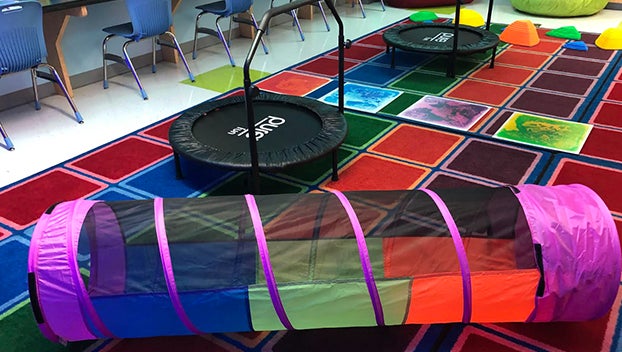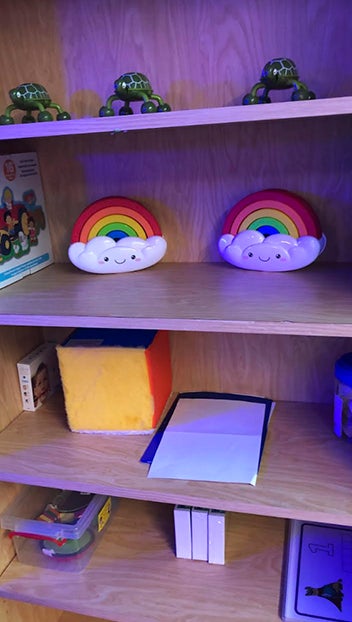PHOTOS — Take a look at BTW Elementary’s sensory room that assists students in self-calming efforts
Published 10:53 am Tuesday, September 20, 2022
|
Getting your Trinity Audio player ready...
|
A new sensory room at Booker T. Washington Elementary uses a supportive therapeutic space to assist students in self-calming efforts by offering an environment of relaxation.
It is a designated place where students can experience calming visual, auditory and tactile stimuli. The room is furnished and accessorized to provide an area of mindfulness to relieve stress and tension. It consists of a variety of equipment for students to use to calm and focus themselves so they can be better prepared for learning and interacting with others.
The BTW sensory room can be a place for students to be sent after in order to decrease agitation, aggressiveness, irritation, sadness, etc. It is also a place where students can go to prevent teacher “burnout.”
Students come to get rid of negativity and return to class refreshed. Teachers can grant a visit to the sensory room as a reward incentive.
Studies have shown sensory rooms have had a positive impact on students. Students get to remain connected with teachers, peers and staff they are familiar with.
Rooms also provide a safe place in a least restrictive environment. Students are better able to follow directions and spend more time on tasks after a visit to the sensory room.
A decrease in negative behaviors was noted as students would perform as directed to be able to go to the sensory room as a reward.
The BTW sensory room was designed for all students — those with autism, vision difficulties, language difficulties, learning disabilities, emotional disturbances, behavioral concerns – any student who needs a safe, quiet room to calm themselves.
Washington’s sensory room has three major areas: The Yoga Zone; the Relaxation Zone; and the Play Zone.
The yoga zone consists of various yoga poses posted on the wall, where anyone should be able to guide the students to perform. Occupational and physical therapists are also invited to work in the sensory room.
Yoga mats and pillows are placed on carpet to provide comfort. Yoga is taught to help students with meditation, breathing techniques, mindfulness, positivity, and more.
The relaxation zone consists of a row of tents to create private, cozy nooks or hideaways that offer students a mostly-enclosed surrounding that promotes calmness, peace and oneness.
This area also has dimmer lighting, sensory aromatherapy and soft Mozart music playing to evoke calmness. There are bean bag chairs and a rocker that provide students the opportunity to relax and read a book. This area even has slime and other tactile sensory fidgets that decrease defensiveness and impedes activities for daily living.
The play zone consists of gel floor tiles, a peek-a-boo tunnel, trampolines, bouncing balls, play dough and other things that provide students with a brief but heavy work that can burn energy and calm bodies. Play dough allows a medium for self-expression and creativity.
Students should be better able to concentrate, as well as develop better fitness, balance and coordination. A trip to the sensory room is only recommended for no more than five students per adult and for approximately 15 minutes (or as needed) to achieve intended results.
There are set rules and protocols for how staff should use and maintain this room. Staff will receive training before operating.
— Submitted by Priscilla Yowman, elementary social worker











